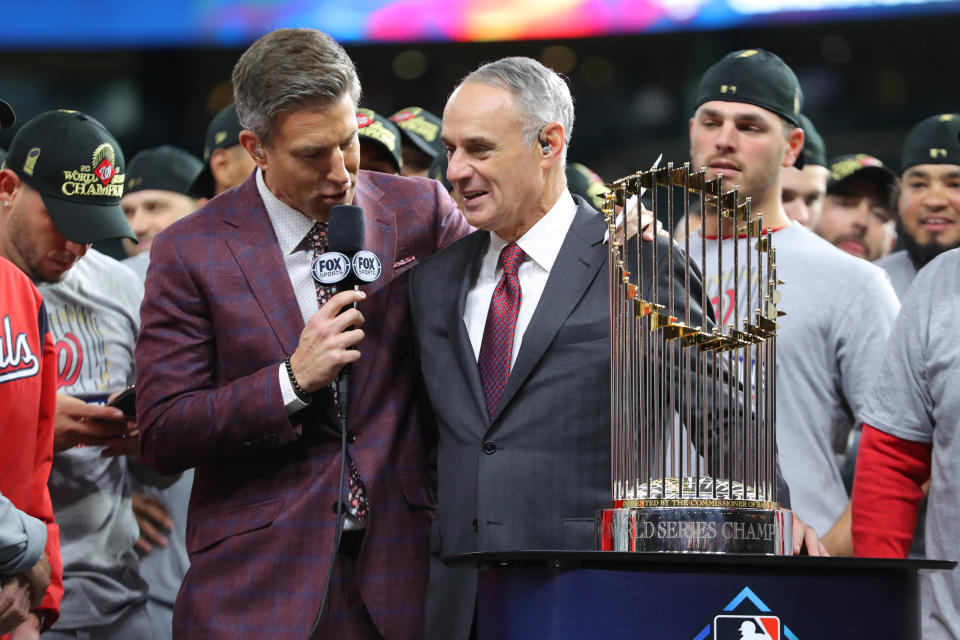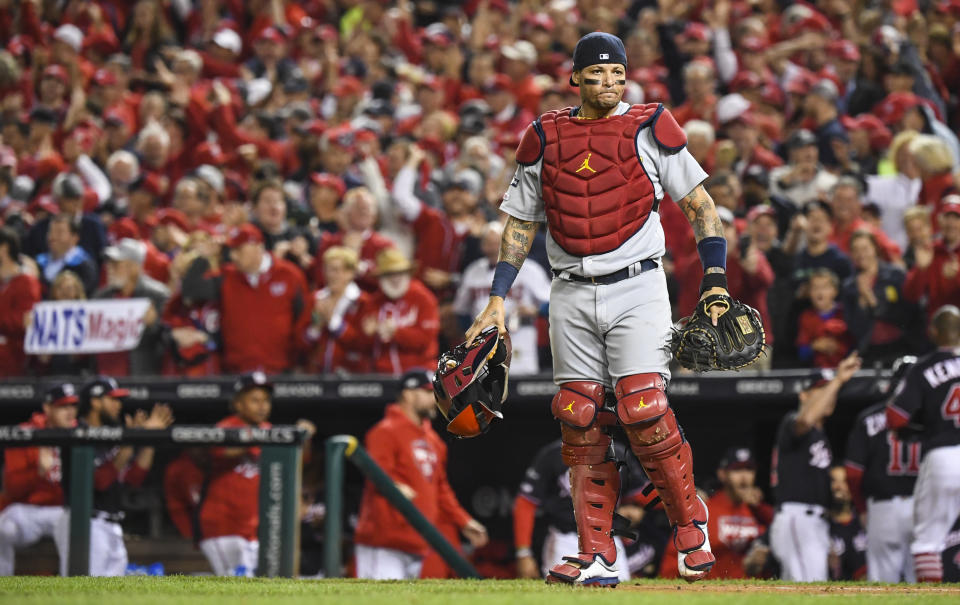MLB's postseason ideas should aim to improve the 162 games that come first

MESA, Ariz. — Fame and fortune and personal satisfaction still not quite enough to save baseball’s six-month, 162-game regular season, it instead the victim of lingering competitive whims and disparity, the league’s latest plan proposes a more permissive postseason to incentivize all that comes before it.
While this has always been the presumed objective — win games, go to the playoffs and win championships, more than a few franchises have been left behind. For some, it’s a run of bad luck or bad decisions or neglectful ownership, which happens. For others, it is self-inflicted. The very intention is to lose, lose big, sell sunshine and beer, and then hope nobody realizes tomorrow has already come and gone.
So, what floats is a 14-team postseason field — six division winners and eight wild cards. Also, first-round byes for two teams, a gimmicky pick-your-opponent element and six best-of-three series, followed by the normal postseason of division series, league championship series, World Series. This plan could be imposed by the 2022 season, or a few months into the next collective bargaining agreement.
It’s a lot to take in.
First, the best thing about commissioner Rob Manfred is he is not afraid to try new things. Just ask the Atlantic League.
This is, most definitely, a new thing.
As trial balloons go, it was shot down with prejudice somewhere over Trevor Bauer’s house, which does not make it a bad idea. It just makes it big and puffy and an easy target.
Change makes people say stuff.
Not Theo Epstein, though. After 30 seconds spent detailing how busy he’d been the previous 24 hours, the Cubs executive concluded, “I actually haven’t even read the memo yet.”
So, let’s grant for a moment that baseball could be better. And it could be better. Teams could try harder and cheat less, for two. The difficult part is actually providing a solution, something other than, “What’s that big thing up there? I should shoot it down.”
Gabe Kapler, on Tuesday wearing his San Francisco Giants black and orange for among the first times, said he favored the more-is-better proposition.
“My knee jerk is it's an exciting concept and any time these concepts are introduced at the early stages, it kind of seems like they go through iterations, right?” he said. “But anything that makes the game more exciting for fans and gives more teams opportunity to get to the postseason I think is good for baseball.
“You think what they're trying to do clearly is, they feel like there's a competitive gap. And if they add teams in sort of the bottom of the wild-card thing they're thinking the competitive element gets stronger, right, and you have more teams in it in the last couple months and things like that.”
Not enough teams are committed enough to contend for October. Sadly, we generally know which ones they are in April. Manfred’s idea would seem to be: increase the number of postseason teams from 10 to 14 and therefore shorten the distance between no shot and maybe a shot, and therefore rebuild the game’s middle class. Because middle class has a shot. Manfred’s new system would have produced sub-.500-record playoff teams in 2017, 2016 and 2014, and four in total. By the new PECOTA projections released at Baseball Prospectus on Tuesday, the National League will have the 80-win St. Louis Cardinals playing this October, by a smidge over the 79-win San Diego Padres and Milwaukee Brewers.

In the current climate of tear-downs and tankings and rebuilds and one-foot-ins, it doesn’t look like baseball can support 14 playoff teams. But, perhaps, if 80 wins puts you in the tournament, then that seems doable, and maybe that creates more, say, 85-win teams if purely by accident, which is better than a lot of 75 wins, a bar 12 teams did not clear last season. Not everybody can win 100 every year. And no one should lose 100 every year. And sometimes baseball is too stuffy for its own good, which is intended as a compliment to Manfred.
The problem, perhaps, is those 162 games over six months. Those 162 games are real. They’re supposed to prove something, something more than being among the 14 best teams in a 30-team league. Maybe that’s being too stuffy, but that’s also one of the cooler truths in the sport. That is, it’s harder to win 100 games from the beginning of April to the end of September than it is to win 11 or 12 from the beginning of October to the end of October. Teams are supposed to earn October.
To that end, one National League executive looked over the playoff proposal and winced.
“If you want to do that, that’s fine,” he said. “But find a way to show the sanctity of the regular season. The regular season is why you do this. We’re getting away from that fact.”
A 14-team postseason is, let’s say, aggressive. But, OK, let’s keep that. As a compromise, however, leave the division winners out of the first round and also not subject them to best-of-three dice rolls. Instead, have each league’s four wild-card teams play off, single elimination, two games maximum. The division series could start Thursday and Friday, less than a week after the regular season’s traditional Sunday conclusion.
As a tradeoff, with an eye toward greater competitive balance, and if we’re going to lower the bar for competence, the worst of the league must rise to something presentable. So, franchises that are firmly and chronically non-competitive — say, 90 or 95 losses over three consecutive seasons — would be docked in the draft. Say, 10 places in the draft order. Lose 90 or 95 again, that’s another 10 places. It wouldn’t be long before owners and their general managers would lose the alibis of building for the future, because that’s hard to do from the back of the first round.
The bothersome element of Manfred’s plan is the assumption that follows, that the postseason has grown stale, which it has not. Or that it needs to play better for television, which, in terms of the competitive product, it does not. Someone else will have to answer for the money part of all this. But, in terms of the baseball, purely the baseball, the postseason works as is. If it must be changed, if there is a way it can work better, then it can be changed, and it’s worth that conversation.
More from Yahoo Sports:

